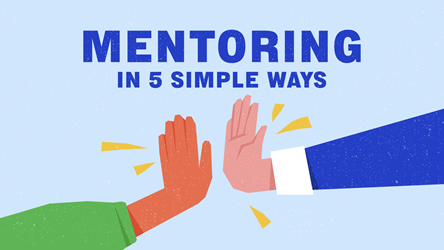Instruction Manual February 2018

Jargon Watch
Tech Jargon
Hash and salt: Not ingredients of a rich breakfast, but security measures used to encrypt data (such as passwords) and protect it from unauthorised access.
Hash: Hashing encodes data as a string of random characters, making it tougher to decrypt. To verify data, new data is also hashed and compared with the stored hashed data.
Salt: Like seasoning, salting data adds another layer of complexity. E.g., “password” becomes “password.s0d1um.chl0r1de”, which is far harderto crack.
Say It Like This
AFP: Agence France-Presse, pronounced “ah-zhawns” (like the first part of “genre”), “frohnz”, “press”. Often mistaken as “Associated Free Press”.
Public Service Jargon
Deep tech: Technology that is based on an entirely new discovery or invention – beyond adaptions or integrations of existing technologies – and that is poised to make a massive societal impact, or both.
LMS: Learning management systems. Often used by employers, trainers and educators to share digital material in a structured way, such as for a course. The learning management system may also have built-in features that assess participants’ performance.
Enabling Change Through Technology

Mr Andy Sim is Director of Digital Innovation at the National Volunteer & Philanthropy Centre (NVPC). Before joining the NVPC, he spent 30 years in technology companies, several of which he transformed to achieve exponential growth. Now transforming giving with technology, he shares a few tips.
Q: What can the Public Service learn from the non-profit and private sectors in effecting organisational change?
A: Producing organisational changes in the public sector is more difficult. Our public sector faces the challenge of meeting societal needs and growing citizen expectations with limited resources, while operating within a system of processes and measurements that may not always encourage innovation. Also, changes to public policy and service have wider-reaching consequences and therefore are harder to implement.
Despite these challenges, public sector leaders can learn from the private sector by implementing a customer-oriented model. This shifts the focus from delivering excellent services within the agency, to collaborating with stakeholders to address citizens’ needs in a holistic and symbiotic way.
Q: When doing digital innovation for the social sector, how do you support individuals to be more open to change?
A: The National Volunteer & Philanthropy Centre harnesses technology to build a giving ecosystem that connects individuals, companies, beneficiaries, non-profit organisations, ground-up groups and the government. At the core is Giving.sg, an intelligent platform that facilitates exchanges among partners to co-create multiple solutions serving diverse needs.
When encouraging individuals to adopt a giving lifestyle, we understand that change does not happen overnight. Hence, we designed the user experience on Giving.sg to include simple nudges and micro-actions to help nurture giving habits little by little. We also view giving not as a one-off, but as a journey. By using the journey approach, we recognise that people start giving at different stages of their life, and in multiple ways.

We launched Giving.sg as the national one-stop portal for giving time, skills and resources two years ago. Since then, we have been learning and verifying users’ needs through analytics and research to develop Giving.sg into an open micro-services platform.
Q: How do you apply your experience in driving innovation to different sectors?
A: Regardless of the sector, the keys to building a great innovative organisation are conscious choice and courageous discipline. Successful innovation does not just happen, it needs to be nurtured.
While technology is a great enabler in driving innovation and growth, above all we need change in the organisational culture. Most organisations recognise the need to innovate, but few have developed an environment to handle failure. In my previous companies, I encouraged risk-taking by budgeting for the creation of a “safe zone” for experimentation, and avoided stigmatising unsuccessful results as failure.
Without a doubt, we have entered a new era of massive disruption brought about by technological advances. There is an urgent need to introduce change at the systems level. To succeed, we must move away from the “silo” mentality and ensure all stakeholders understand their shared purpose. Only then can we create greater good for all.
In Numbers
In 2017, the Singapore Tourism Board and Economic Development Board launched the “Passion Made Possible” campaign to promote Singapore as the tourist destination of choice. Take a look at the Singapore’s tourism numbers from 2012 to 2017.

Get Wired: Bot Or Not?
On social media, troll and bot accounts can use breaking news and trending topics to spread misinformation. Here are questions to consider whether an account is a bot, or newly set up for trolling.

BOTS
1. Is the account newly created?
Check when the account started and when the first post was made. The newer the account, the more likely it is that it was set up for spamming, trolling or impersonating someone in the news.
2. Is their posting schedule humanly possible?
The posting frequency can be a dead giveaway. A real person cannot be posting around the clock, or posting huge amounts of content within a short time period.
FAKE ACCOUNTS
1. Are they having an identity crisis?
Look through the user’s profile for inconsistent details, such as names, user handles and locations that do not match. Spoof accounts and scammers tend to use stock images or stolen photos for their profiles. Do a reverse image search to verify that the photo really belongs to the user, and check that the user’s other photos match.
2. Is the account of a high-profile person verified?
Many social media platforms will endorse the official accounts of public figures (e.g., with a blue tick). Accounts without that endorsement are unlikely to be the real deal. Tip: Look out for fake accounts that use an uppercase “I” (I) as a substitute for a lower-case “L” (l) in usernames (e.g., in variations of @realdonaldtrump).
Got a question or topic you want answered by a pro? Send your suggestions to psd_challenge@psd.gov.sg
- POSTED ON
Feb 5, 2018
- TEXT BY
Chia Soong Ming
- ILLUSTRATION BY
Brenda Lim
-
Work Better
Instruction Manual March 2017








